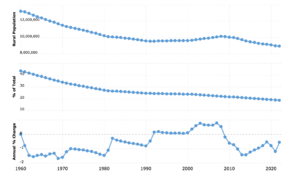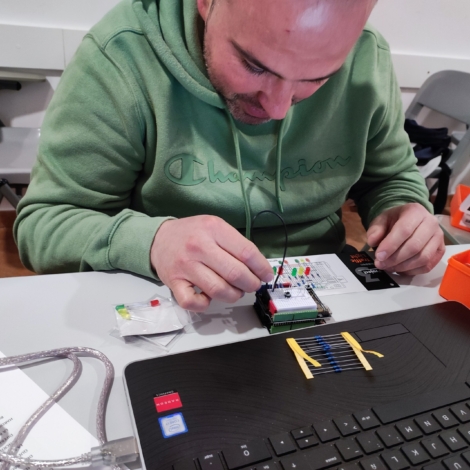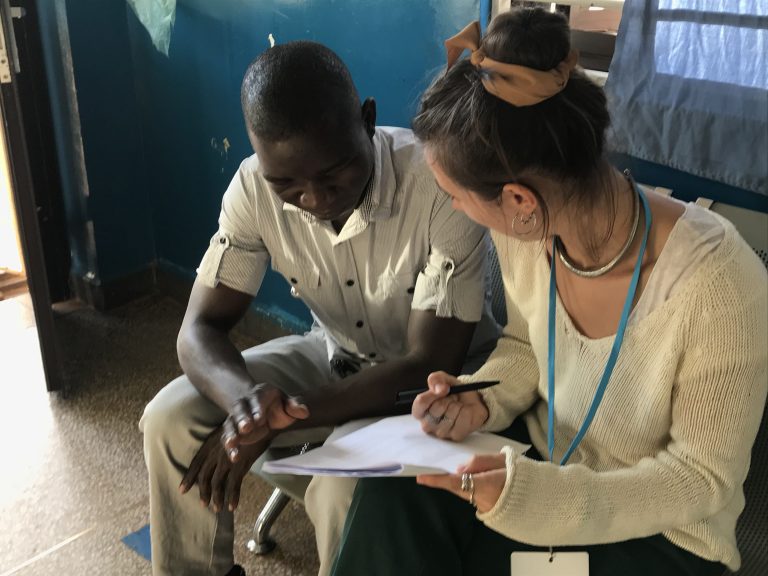The village of Huete in Spain’s Cuenca province may be laying the foundation for the future of farming in the country. A session of weekly programming workshops that began in November is wrapping up as five men and women, down from nine, have been working with Arduinos. The training could be the first step toward robotic farms controlled by open-source electronics.
“I thought Arduino because it is a simple way to begin,” says Pablo Vicente Legazpi, the founder of CAEsoft engineering software consultation firm and the volunteer head of the robotics project.
A transformative scope

The decling rural population in Spain since 1960. Source: World Bank /: MacroTrends
Automated farms are a proposed solution to decades of declining populations in rural Spain. Spain’s rural population has been decreasing for more than a century, and in the last 50 years it has dropped nearly 30 percent. Younger people are moving to the cities leaving farms shorthanded.
The robotic farm project has a transformative scope, and the workshops are just the start. Mr. Vicente’s plan is to automate the farms and cultivate crops with a higher resale value. Robotics may also reduce monoculture, increasing the variety of crops cultivated along with farmers’ salaries. The farmers who remain could run the newly robotic farms and earn more money per hectare.
“If we’re going to transform agriculture and return to more varieties of crops, we cannot do it with people because people are not living here. Robots can do it – transport the crops,” Mr. Vicente says.
The robotics Mr. Vicente envisions could look like suspended tracks around which devices move as they monitor and care for the crops. The idea is similar to these by Singular Logistics, a technology that Mr. Vicente once helped to develop by writing design software for a suspended rail system.
The challenge
The obstacle at the moment is not the investment in infrastructure, or even the training program for the future managers of the proposed robotic farms. The money could come from a grant, Mr. Vicente says, and he is not concerned about his prospects for procuring it. Instead, the issue is sales.
“The first thing we need to do is figure out where to sell the product,” Mr. Vicente says.
He foresees success through online sales to local markets. Future farms equipped with multispectral cameras could upload images of produce to connect with consumers online.
New technology and new markets are two aspects of the project; the other is conservation. By increasing the profitability of the land, a plan like this one could reduce the area of land under cultivation. Rural Spain could reduce farmland and increase the area of protected lands, Mr. Vicente says.
Thinking bigger, however, the idea could a be solution for declining rural populations in any country.
“Sensors and programming are more or less the same. It can be replicated everywhere,” Mr. Vicente says.
Collaboration
The project may have a boost from the American Society of Mechanical Engineers. Later this year, the ASME Spain Section plans to begin a collaboration with Mr. Vicente and promote the robotics project among its members, according to Carmen García Jiménez, who heads the section.
In the meantime, the project may benefit from further support.
“Joining forces with more people will improve the planet quicker,” Mr. Vicente says. His wishlist for upcoming workshops includes new computers, a robotic arm for testing and a small orchard as a hands-on expansion to the educational program. Talks with local government officials, a cooperative and an unnamed company are underway.
“I am already experimenting with how to sell the vegetables. The plants are growing up and soon we will have a wave of peppers and tomatoes. Many things to do!” Mr. Vicente says.
Those interested in supporting the work or in learning more can comment on this page for a private email introduction to Mr. Vicente.f


Great work. I would like to learn more about robotic farming.
Kind regards
I will be there